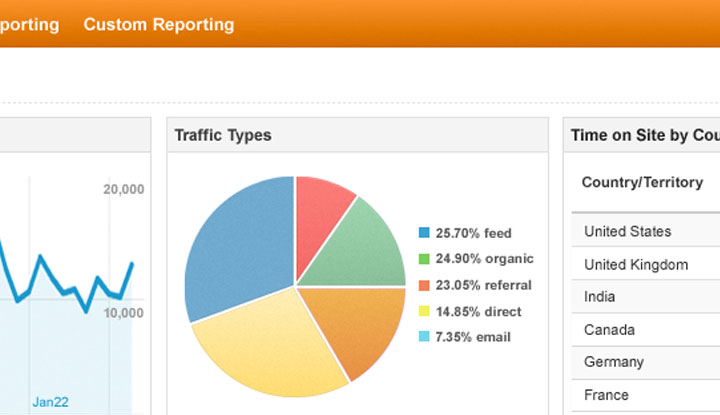Website designers have been using search engine optimization (SEO) to lure website visitors for nearly twenty years. These days, it’s mandatory practice for businesses. So, does implementing SEO to the best of your abilities even tilt the playing field in your favor anymore?
Attracting website visitors has always involved more than SEO. But as companies grow more sophisticated with their SEO practices, it becomes imperative to engage in other types of online marketing to drive traffic to your company website.
There aren’t really shortcuts, either; making your company website worth visiting is the concept behind most of traffic-driving methods.
Here are six ways your company website can be more useful and, possibly, generate new and return visitors:
1. Create Better, More Interactive Content
The written word is the heart of any site. No simpler advice exists than constantly improving it – your content has to be concise in addressing topics on visitors’ minds. Bolster it with other media.
For example, create a series of brief instructional videos. How-to content excels when you can visually demonstrate your product or service. Search engines love video content. Is your industry more audio-friendly, or would video eat up too much bandwidth? Post interviews and explainers as mp3 files.
Every little bit helps, but what helps most is excellent information targeted to your specialty. The best company websites produce valuable, well-written insights, bringing people useful information that’s difficult to find elsewhere.
2. Build A Responsive Company Website
Increasingly, business is being conducted on mobile devices; it’s becoming the norm for companies to build responsive versions of their websites catered to the mobile user.
A responsive design allows a website to fit whatever screen size loads it: desktop, laptop, tablet or smartphone. Visitors appreciate a site that’s simple to navigate via phone, providing the most essential information in an easily accessible manner. Determine what mobile users are most likely to seek – directions, your phone number, your hours, inventory – and put that content front and center.
3. Start a Loyalty, Referral or Brand Ambassador Program
It’s fairly straightforward to make existing customers feel appreciated, and keep them from migrating to a competitor.
Incentives rewarding repeat business come in different shapes and sizes. Customers who write positive reviews on third-party sites can become “brand ambassadors” with special privileges. One-time rewards can be offered for customers who refer business. Repeat purchases themselves can be discounted or used to accumulate reward-program points.
4. Conduct a Webinar
The expertise people seek from you doesn’t need to come in the same old format. Engage readers with something interactive. Offer a free instructional session to display your know-how. Many webinars are now built around the idea of attending during part of your lunch break. Give customers a face and voice to associate with your company, and a forum for interaction via Q&A sessions, polls and special offers.
5. Make Your Case (with Case Studies)
Potential customers want to see how your product works in a real-life setting. The closest thing you can offer, in many cases, is a case study.
Pick a satisfied customer using a product you want to promote, and co-author a story about your business relationship and successes. Co-market whitepapers or webinars with partners who build complementary products. Few things are as potent a marketing weapon as getting your success out there in the words of a successfully satisfied customer.
6. Declare Local Ties
Even if your business is entirely online, don’t ignore local directories and mobile mapping applications. For brick-and-mortar stores, it’s even more crucial.
Many consumers will see value in buying local, boosting their own economy. If local customers go looking for you, ensure your business can be easily found – submit your location to online mapping services. Don’t frustrate customers who may drive around, unable to find you.
Alison Brehme is the senior online marketing manager at Hostway Corporation, a provider of cloud hosting, dedicated hosting, managed hosting and web hosting services. Brehme has over 10+ years of online advertising and marketing experience. She has worked with B2B and B2C companies such as Dell, AMD, Seagate Technologies, Blu-Ray Disc Association, etc. Visit her blog, B2B Media Mavens, where she shares advice, best practices, and POVs etc for all things advertising, marketing and media.
Nikole Haiar is the Director of Marketing, Retail and Partner Services at Hostway Corporation. With over a decade of experience in technology-focused B2B marketing, Nikole is responsible for the marketing, strategy and execution for Hostway’s retail and white-labeled cloud applications, which includes websites, email, online marketing, SEO, business productivity and web security tools.
© YFS Magazine. All Rights Reserved. Copying prohibited. All material is protected by U.S. and international copyright laws. Unauthorized reproduction or distribution of this material is prohibited. Sharing of this material under Attribution-NonCommercial-NoDerivatives 4.0 International terms, listed here, is permitted.













